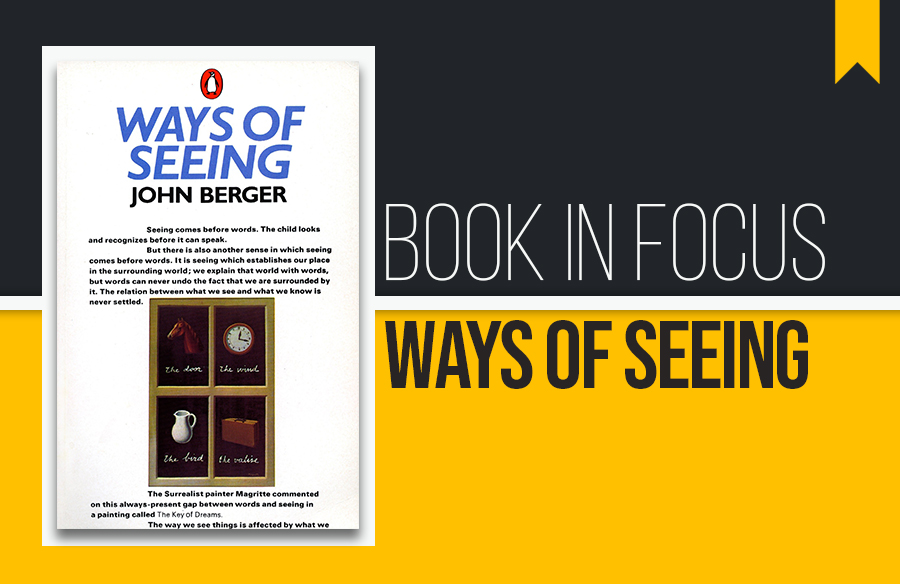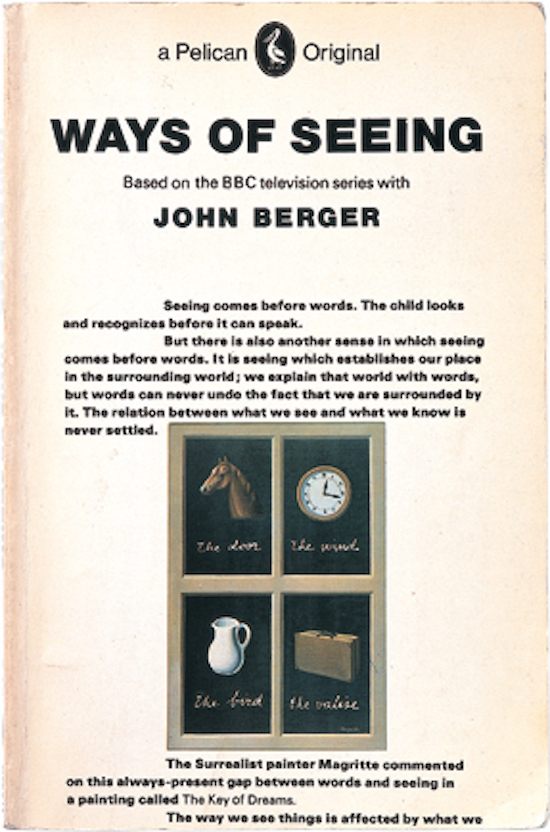

Berger does not refer the reader to any feminist theorists in his chapter on the male gaze. He expresses surprise that anthropology might enlighten art history, as if other thinkers hadn’t been lifting ideas from that weird field all century long. Berger’s chapter on photography’s impact upon the idea of the “original” is an accessible retelling of Walter Benjamin’s “The Work of Art in the Age of Mechanical Reproduction.” Elsewhere, he paraphrases Claude Lévi-Strauss on oil painting and possessions. Several of the chapters in Ways of Seeing are essentially explainers for other, more complicated works. Gender politics, the role of the visual in abetting capitalism, colonialism’s special investment in that role: He whistle-stops past them all. In this small work, Berger gives a basic primer on the complicity of the European art tradition from 1500 to 1900 with the politics of the same period. Berger takes his readers beyond the visible, towards a closer understanding of the world as it really is-the one capitalism, patriarchy, and empire try to hide from you. Berger points out that the globe hovering behind Holbein’s The Ambassadors refers to incipient empire and so to racist violence. European conventions on perspective, he argues, offer the world up to the covetous viewer with a deference found in no other tradition. He tells us that still-life painting did not depict objects qua objects, but as items to be owned. He explains the difference between the painted nude-seductive, objectified-and the naked human being. In fewer than 200 pages, Berger whips the curtain back on contemporary advertising’s roots in European oil painting. It is very short, for one thing, and it moves very quickly. Revisiting the book now, you may find it reduced. Berger synthesizes, paraphrases, and boils down large swaths of important cultural theory into a work that is both inspiring and intuitive to understand. By the same token, however, professors assign Ways of Seeing to college freshmen because it is easy. It’s a book about art history and the media, but it’s also a magic trick. I did: Holding that dog-eared copy in my hands today, the book still seems to shiver with revelatory power.įor many Berger fans, Ways of Seeing represents the first time a book trusted them to see past the appearance of things. If you were into art as a teenager, you probably read it then.
JOHN BERGER WAYS OF SEEING BOOK SERIES
In the days since his death, Berger has been most widely eulogized for his 1972 BBC series Ways of Seeing, which was adapted into a popular book. He began teaching painting in 1948, and published his last book of essays, Confabulations, only last year. It spanned the second half of the long twentieth century and at least six different jobs (art historian, novelist, playwright, critic, teacher, painter). Our grief has been poured out widely, in proportion to his great generosity. he will almost certainly change the way you look at pictures." By now he has.John Berger died on Monday, a few weeks after turning 90. First published in 1972, it was based on the BBC television series about which the (London) Sunday Times critic commented: "This is an eye-opener in more ways than one: by concentrating on how we look at paintings. The relation between what we see and what we know is never settled." John Berger's Ways of Seeing is one of the most stimulating and influential books on art in any language.


It is seeing which establishes our place in the surrounding world we explain that world with words, but word can never undo the fact that we are surrounded by it. The child looks and recognizes before it can speak."But there is also another sense in which seeing comes before words. How do we see the world around us? The Penguin on Design series includes the works of creative thinkers whose writings on art, design and the media have changed our vision forever.


 0 kommentar(er)
0 kommentar(er)
